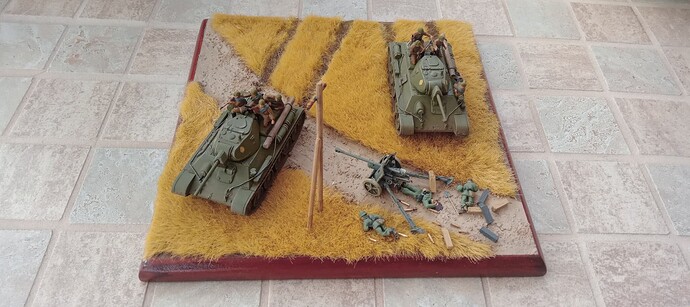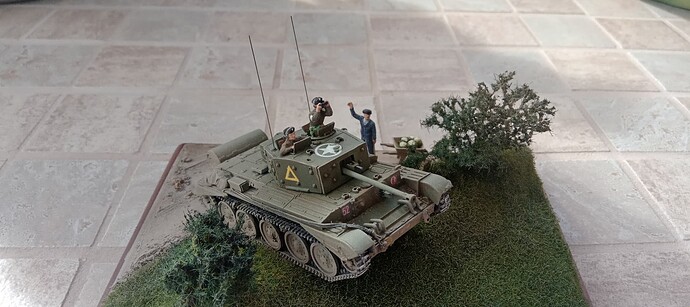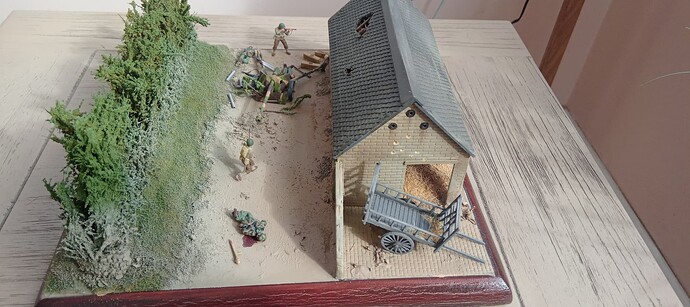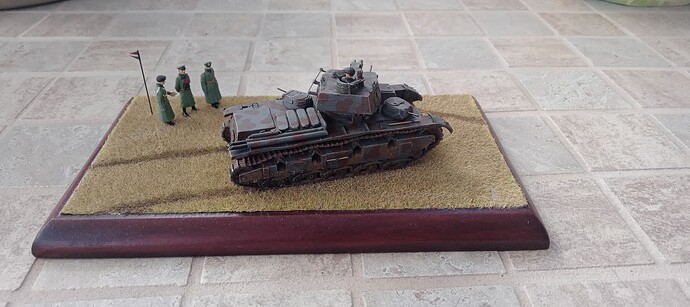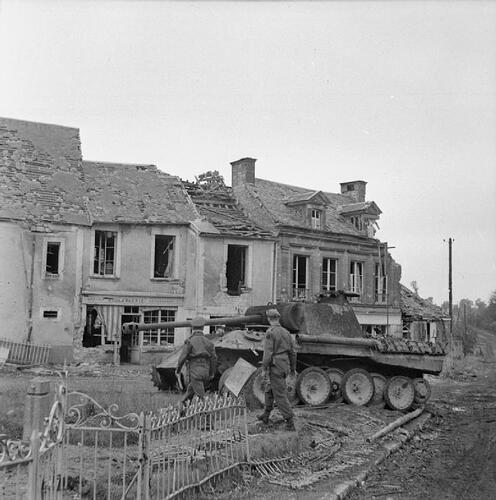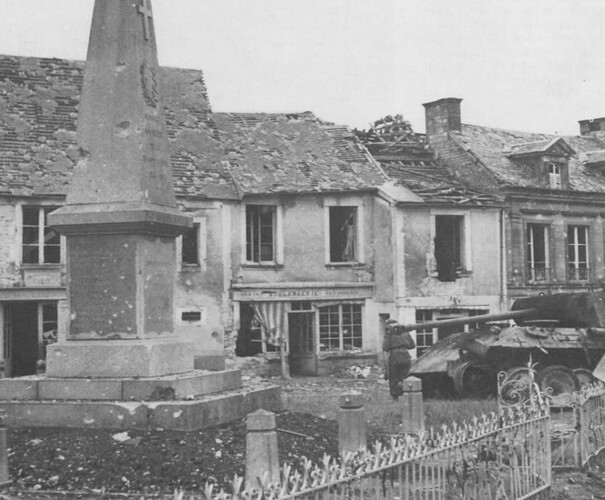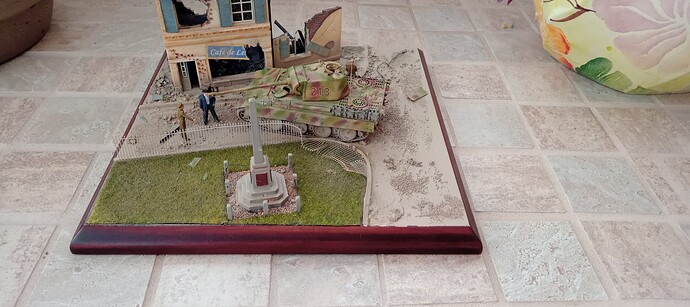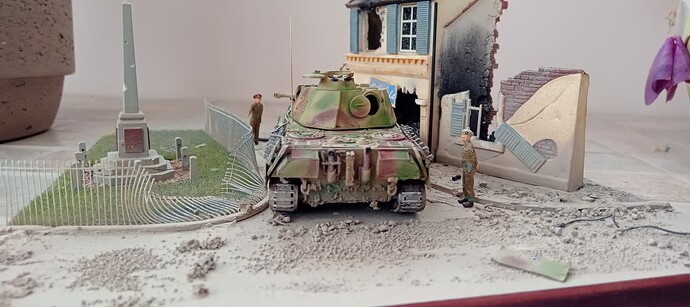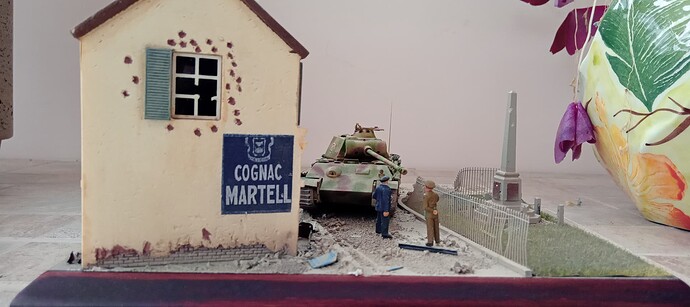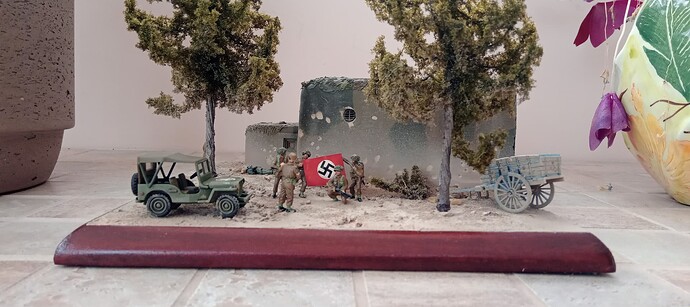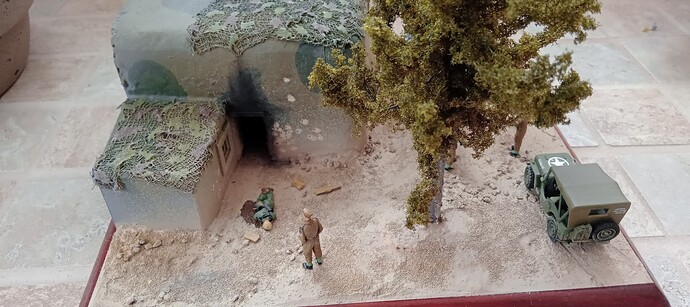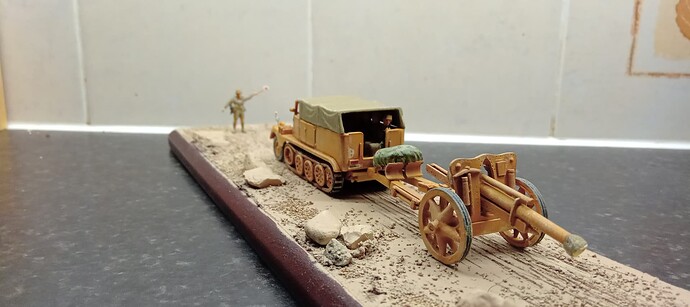Occasionally I am guilty of dabbling in smaller scales (than 1:35); some time ago I was moved to tackle a range of 1:76 kits with the aim of, well, trying to get the best from what was available, especially those kits I’d cut my teeth on as a kid, when half the time they were purchased and built as they had considerable play-value. One could use them alongside the fortifications, buildings, scenic stuff and the many figures sets one could then buy back in the 60s. So, my efforts were really a tribute to Airfix, Fujimi, Nitto and Matchbox; I tackled these around 15 or so years ago, I think.
I haven’t displayed them here before but as I was forced to utilise them for the recent Abingdon model show (I had to fill a table’s worth due to my mate being on leave), I thought I’d document them before I returned them to storage. Here’s the first tranche:
I always category this as a Kursk-type action but really it could be any Soviet attack on the Eastern Front; kits are Matchbox and the 50mm Pak came from an excellent white metal firm called, I think, MMS, long defunct, sadly. I gave the figures (Airfix) the wrong colour greatcoats regrettably.
To Normandy 1944 now:
This is the A30 Challenger; a resin kit from Gramodels. Modified cow from the old Merit range.
A Cromwell from Airfix; Frenchman and wheel barrow from, I think, the Dapol range, so probably Airfix at some stage.
The enemy in Normandy:
I had hopes that this could represent the 17th SS Pz Gren Div but I now understand they had StuG IVs not IIIs; the road sign isn’t all it should be either. Figures are the Airfix US Paras.
And now for a bit of a scrap in the Bocage:
Pak is from Airfix, as are the figures (less the dead - which may have been from SHQ Miniatures); barn is also Airfix from their “Waterloo” set. Cart from the model railway fraternity but I can’t quite remember which firm - laser cut wood.
On to 1945 and the Victory Parade in Berlin 1945:
This is the Matchbox Comet which comes in the markings of the CO of whatever regiment it was (I forget); they were all re-painted in Brunswick Green (which must have been somewhat tiresome for the soldiers concerned). This vehicle is also shown in the colour spread of the ancient Profile Publications booklet on the Comet.
Somewhat out of sequence historically is a Neubaufahrzeug, modelled as on trials with a regimental commander hosting a General. I’m pretty sure I got the colours of the standard wrong, and the central stripe should be black and the rest pink, not as I’ve shown it. I think the model was an ancient Skytrex one in metal, but I just can’t quite remember:
I was pleasantly surprised at how well they went down at the Abingdon show; lots more interest than I thought. I’ll try and post some more soon.
Anyway, over to you guys…(!)
